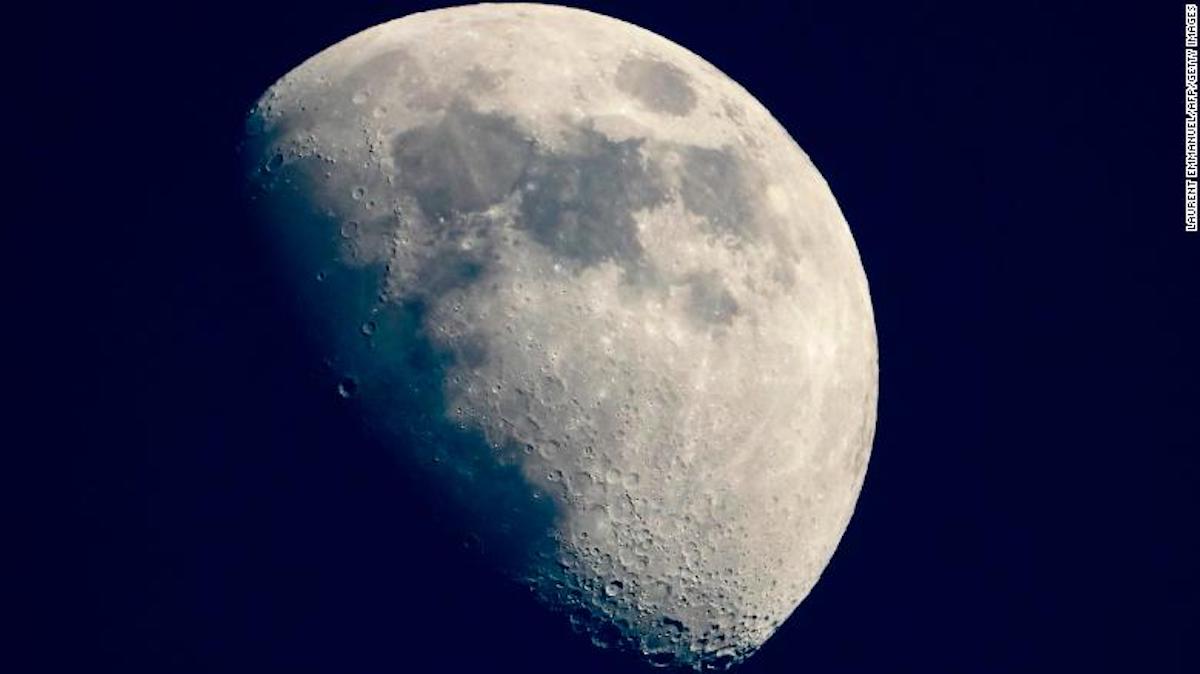An Elon Musk rocket would hit the Moon in March 0:40
(CNN) --
An erratic booster rocket could collide with the moon in the coming weeks, space experts say, leaving a crater on the far side of the moon.
The SpaceX Falcon rocket stage was used in 2015 to launch the US Deep Space Climate Observatory (DSCOVR) and has been floating in the outer part of the Earth-Moon system ever since.
Bill Gray, an independent researcher focused on orbital dynamics, who was the first to mention the impending collision, said according to his calculations that the rocket part would hit the Moon a little north of its equator "within a minute" of 7: 26 a.m. ET on March 4.
The way the object is moving makes it difficult to pinpoint its exact location, he added.
Although it is likely to change only a few kilometers, he indicated it.
"Right now, we can't get any more data because the object is quite close to the Sun in the sky. On February 7-8 we will have a brief opportunity to observe it and get more information, and the time and location will be better determined." Gray said via email.
NASA launches a mission that will crash into a near-Earth asteroid
SpaceX ship prototype passes major test 0:50
NASA shared a statement Thursday about tracking the object.
advertising
"NASA is monitoring the trajectory of a SpaceX Falcon 9 second stage, which supported the launch of the US Air Force (now US Space Force) Deep Space Climate Observatory mission," Karen said. Fox, NASA's chief science communications officer.
"That mission is a partnership between NASA, NOAA and the US Space Force. After completing its flight, the second stage was placed into its intended heliocentric disposal orbit to escape Earth," Fox added. On its current trajectory, the second stage is expected to impact the far side of the Moon on March 4, 2022."
While spacecraft sometimes intentionally crash into the moon at the end of a lunar mission, for example, space debris randomly hitting the moon is rare, said Holger Krag, head of the Agency's Space Debris Office. European Space.
It is safer for the rocket stage, which is 15 meters long, to crash into the Moon than to make an uncontrolled entry into Earth's atmosphere, Krag explained.
The rocket propellant is believed to weigh between 3 and 4 tons.
"The part would be permanently deleted. From a security point of view, this is actually the safest way to delete it. Drifting it in an orbit around the Sun is no guarantee that Earth won't recapture it one day." said Krag.
“Managing the return of the stage to re-enter the atmosphere in a controlled and safe way is extremely complex.
The arrangement on the lunar surface remains the safest," he added.
Space debris is a big problem.
Russia's Anti-Satellite Missile Test Just Made It Even Worse
Why doesn't the most powerful telescope have cameras?
1:02
deep space objects
There are about 30 to 50 missing deep-space objects, like the Falcon rocket stage, that have been missing for years, but no space agency has systematically tracked space debris that far from Earth, said Jonathan McDowell, a astronomer at the Harvard and Smithsonian Center for Astrophysics.
"This is the first time that something not aimed at the Moon has been detected accidentally hitting it. But, that's mainly because we weren't paying attention until recently," he said by email.
Unintentional collisions of rocket parts with the moon could happen more frequently in the future, Krag warned, with additional missions using Lagrange points, equilibrium points more than 1 million kilometers from Earth where gravitational forces from the Sun and Earth are more or less balanced.
Spacecraft, like the recently launched James Webb telescope, are often deployed to these points, where they don't need to use much thrust to stay in orbit.
Webb Telescope successfully deploys its solar shield 1:00
McDowell said on his blog that the rocket stage's orbit was "somewhat chaotic," as it was affected over time by lunar and solar gravity, as well as Earth's.
Both Krag and McDowell said there are no clear guidelines for space agencies and companies to handle these situations.
Also that it is difficult to get rid of these launchers and the spacecraft and satellite they deliver.
"Deep space traffic is increasing," McDowell said.
"And it's not just the United States and (Russia) that send things into deep space, it's a lot of countries and even commercial companies like SpaceX. So I think it's time for the world to get more serious about regulating and classifying deep space. activity in deep space.
"This is not that 'SpaceX did something wrong.' It is perfectly standard practice to abandon things in deep orbit," he added.
SpaceX did not immediately respond to an emailed request for comment.
Krag said the collision could be a scientific opportunity.
Dust clouds resulting from an impact could be analyzed for clues about the composition of the lunar surface.
Gray said orbiters like India's Chandrayaan-2 could also take images of the resulting crater, offering a glimpse of some newly exposed lunar soil from a meter or two below, a rare opportunity to peer below the surface of Earth. Moon.
NASA's Lunar Reconnaissance Orbiter, which has been circling the moon since 2009, will not be in a position to observe the impact, according to the agency.
"However, the mission team is evaluating whether they can make observations of any changes in the lunar environment associated with the impact and then identify the impact crater," Fox said.
"This unique event presents an exciting research opportunity. After the impact, the mission can use its cameras to identify the impact site, comparing older images with images taken after the impact. The search for the impact crater will be challenging and could take from weeks to months.
CNN's Jackie Wattles contributed to this story.
MoonNASA

